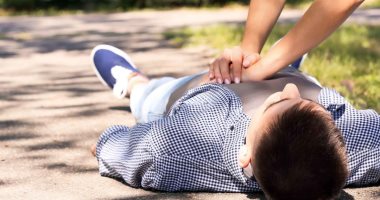Unhealthy lifestyles and lack of physical activity have contributed to the increase heart disease Worldwide, including the serious and fatal problem of sudden cardiac arrest, and time is crucial in the case of sudden cardiac arrest, so it is necessary to act quickly and follow the necessary steps to address the situation whether you are suffering from sudden cardiac arrest or you are with someone who is facing the same problem, it can Your quick action can save a life, according to Times of India.
Initial symptoms of a heart attack
Dr Siddhant Jain, Senior Interventional Cardiologist and Director of Cardiac Sciences, Shalpi Hospitals Indore, India, said, “Uncomfortable pressure on the chest, or discomfort are warning signs of an upcoming heart attack.
A warning sign is chest pain that feels like pressure and lasts more than 10 minutes.
One such symptom to watch out for is discomfort in different parts of the upper body. Pain or discomfort in one or both arms, back, neck, jaw, or stomach are among the symptoms of cardiac arrest.
One of the most common symptoms of a heart attack is shortness of breath.
What to do if someone around you is having a heart attack
1- Check the pulse
If someone around you is breathing heavily, the first thing you should do is check their pulse. To check for a pulse, place two fingers on the person’s wrist or neck and check for a strong, steady pulse.
You can also try placing your ear to the person’s chest and listening for the heartbeat. If you cannot find a pulse or if the person is not breathing, it is important to begin cardiopulmonary resuscitation (CPR) right away.
2- Start CPR
If the person is not breathing or is just gasping, you must begin CPR immediately.
CPR is a combination of rescue breathing and chest compressions that pump oxygen and blood to the heart and brain.
3- Call an ambulance or take him to the nearest hospital
If someone is experiencing sudden cardiac arrest, it is important to call an ambulance immediately.
Every minute counts in this situation, as prompt medical attention can increase the chances of survival and recovery. If an ambulance is not available or if it is too far away, you may need to take the person to the nearest hospital yourself.
Use an Automated External Defibrillator (AED) An AED is a device that delivers a shock or defibrillator to the heart to try to restore a normal rhythm. It’s easy to use and can be a life-saving tool in the event of sudden cardiac arrest.
4- Follow up cardiopulmonary resuscitation
If the person’s heart does not begin to beat again after using an automated external defibrillator (AED), continue CPR until emergency medical personnel arrive. It is important to continue trying to resuscitate the person until help arrives, as they may have a better chance of survival if CPR is started quickly and continued until medical help arrives. If you witness someone go into sudden cardiac arrest, it is important to act quickly and take the correct steps to help in saving his life.

